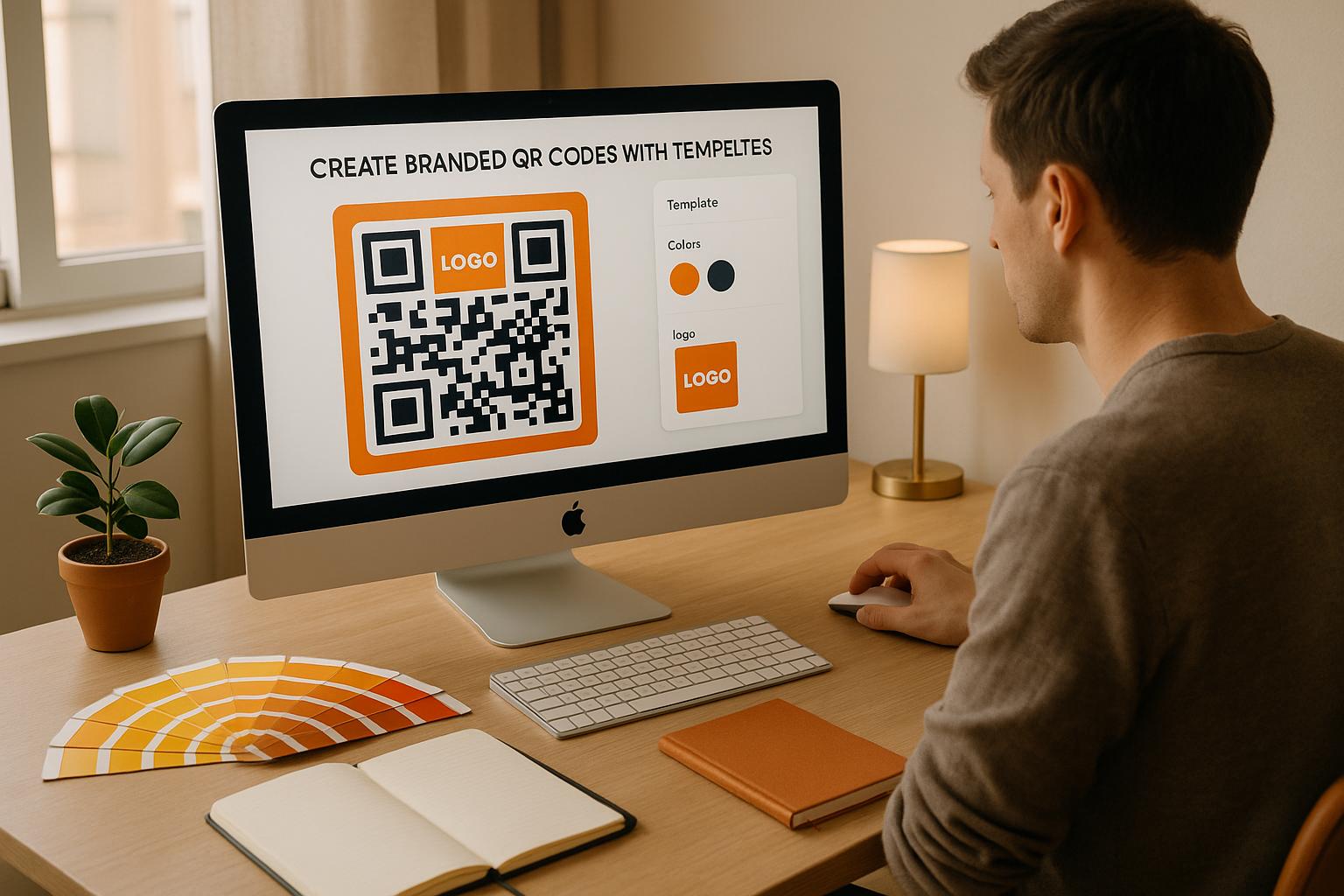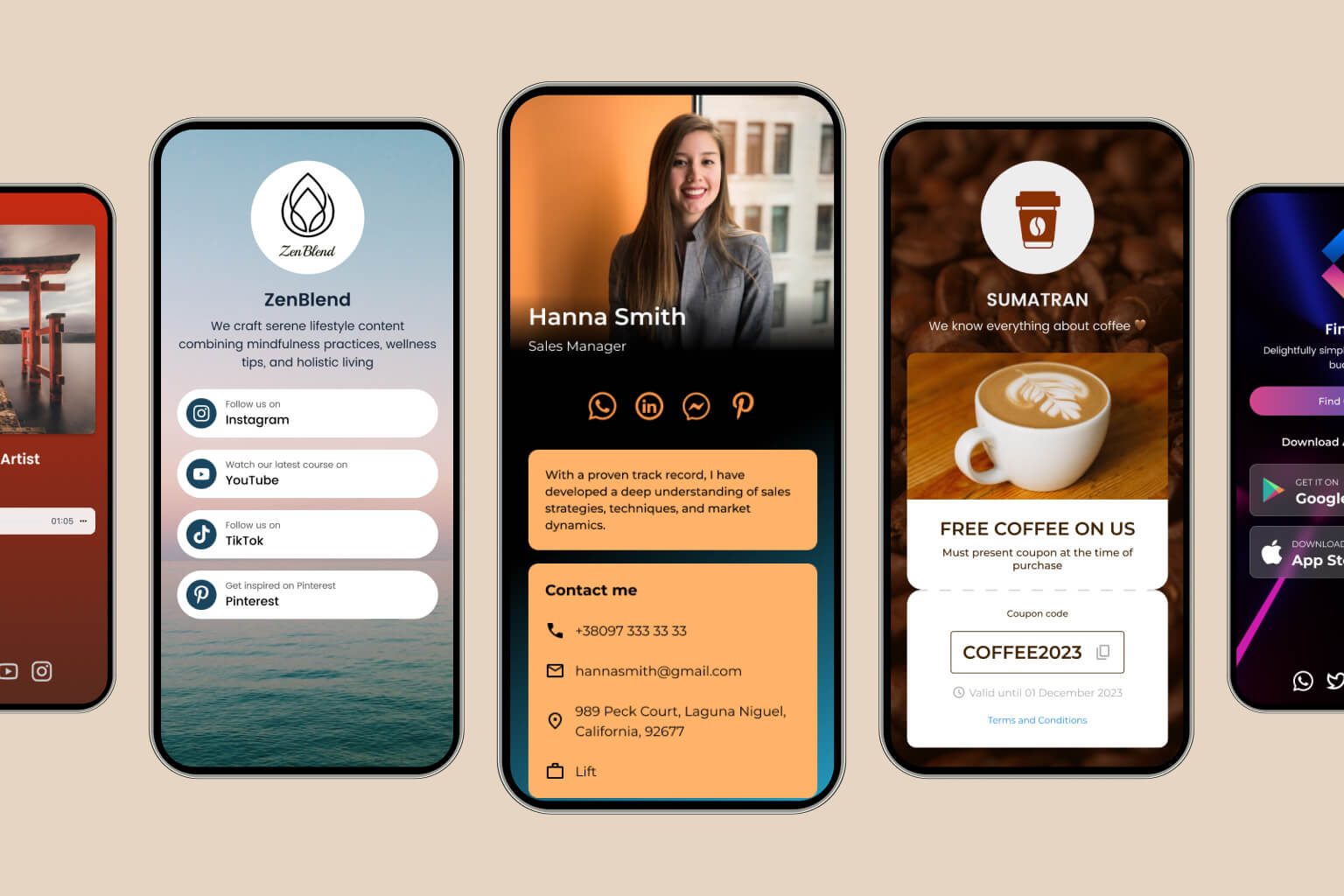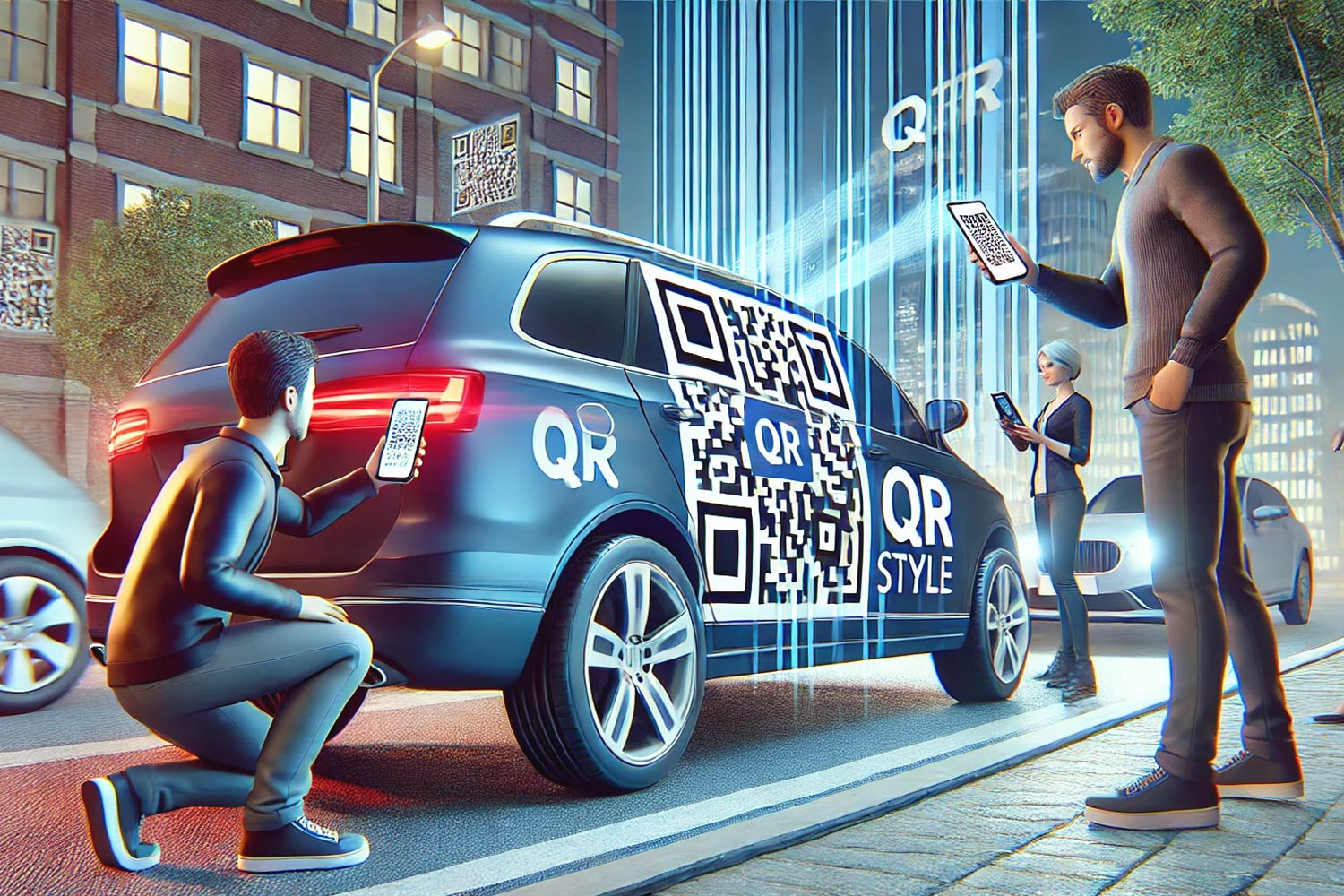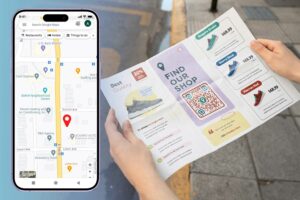Branded QR codes combine functionality and design to boost your brand’s visibility while maintaining their primary purpose: easy scanning. Unlike plain black-and-white codes, these incorporate your logo, colors, and design elements, making them a marketing tool that reinforces your brand identity. Using templates simplifies the process, ensuring consistent, professional designs across campaigns.
Key Takeaways:
- Why Branded QR Codes?
They enhance trust, improve engagement, and increase scan rates by up to 30%. - Why Templates?
Save time, ensure consistent branding, and simplify QR code creation for various campaigns like business cards, menus, or flyers. - Customization Tips:
Add logos, use brand colors, and ensure high contrast for scannability. - Dynamic QR Codes:
Update content without reprinting and track performance in real-time.
Branded QR codes are a modern way to connect with customers, combining design with functionality to make an impact.
How to Create QR Codes with a Logo in Canva (Snappy Version!)
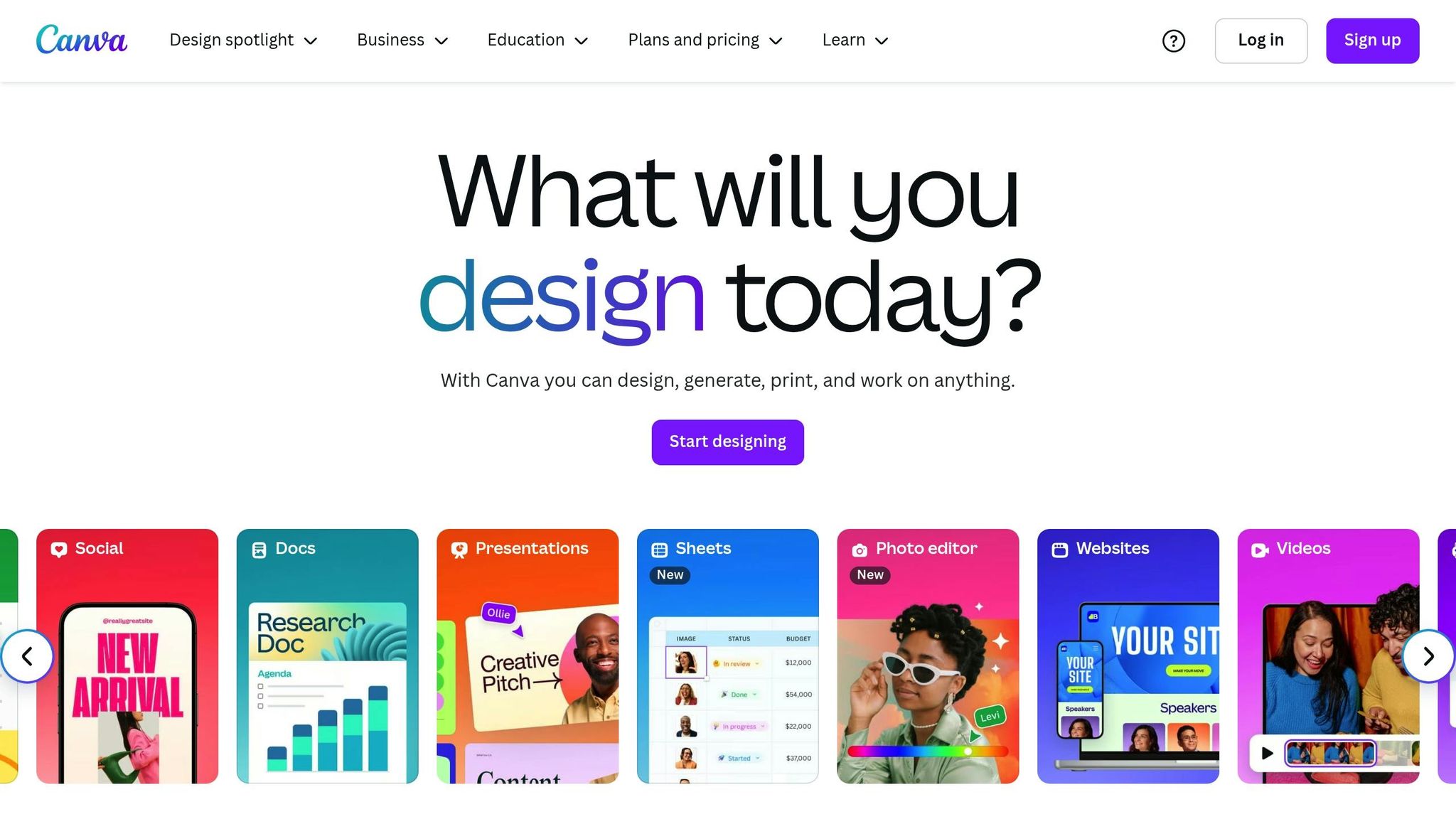
Choosing the Right QR Code Template
When it comes to branded QR codes, picking the right template is a game-changer. It not only keeps your brand consistent but also grabs attention and boosts engagement. A well-designed template speaks volumes about your brand identity while ensuring the QR code functions seamlessly across your marketing materials. With 87% of customers expecting brands to deliver a consistent experience, your template choice plays a crucial role in shaping how people perceive your brand.
Matching Templates to Your Brand
Your QR code template should reflect your brand’s visual identity – think logo, colors, typography, and overall design style. Adding your logo and brand colors can increase recognition by up to 80%, but don’t overlook functionality. To keep the code scannable, ensure there’s enough contrast between the elements.
Focus on customizable features that make the biggest impact, like logo placement, the shape of the QR code’s eyes, data modules, and background designs. Tailor the style to fit your industry’s vibe: tech companies might lean toward sleek, geometric looks, while brands targeting kids could go for colorful, playful designs. Want to make an extra impression? Include a tagline to reinforce your brand message every time someone scans the code.
Next, let’s explore how different industries can benefit from specialized QR code templates.
Best Templates for Specific Industries
Each industry has its own unique needs, and QR code templates can be tailored to meet those expectations. Here’s how:
- Healthcare: Opt for clean, straightforward designs in calming blues and whites. Adding medical symbols or certifications can help establish trust.
- Education: Go for designs that balance approachability with authority. Incorporate school colors, mascots, or academic icons.
- Restaurants and Hospitality: Use inviting templates with food-inspired colors and classy typography, perfect for menus or promotions.
- Real Estate: Choose sophisticated designs with elegant color schemes, agent photos, and space for MLS details or contact info.
- Marketing Agencies: Select versatile templates that can be adapted for different clients while still reflecting your agency’s identity.
Now, let’s look at where you can find these customizable templates to make your QR codes stand out.
Where to Find Ready-Made Templates
Pageloot offers a wide range of pre-designed templates, tested for both visual appeal and scanning efficiency. Whether you’re creating QR codes for business cards, flyers, or posters, their library has options to suit every need. Plus, their system helps ensure your team stays on-brand by following consistent design guidelines.
Need QR codes for vehicles, clothing, or product labels? Pageloot’s templates are flexible enough to fit any campaign while keeping your brand identity intact. The biggest perk? You can tweak these designs for different events or promotions without losing the polished, professional look. It’s all about combining adaptability with branding consistency.
Customizing QR Codes with Branding Elements
Turning a simple black-and-white QR code into a branded masterpiece can make a big difference in your marketing efforts. By incorporating your brand’s unique elements, you transform the QR code into a visually appealing tool that strengthens your brand identity. The trick? Striking the perfect balance between design and functionality – your QR code should look great and remain easy to scan across various devices and environments.
Adding Your Company Logo
Including your logo in a QR code is a smart way to create an immediate connection with your brand. Every time someone scans it, they’re interacting with your brand. To make this work seamlessly, start with a high-quality logo in a vector format like SVG or EPS. This ensures your logo stays sharp, even when resized.
Position your logo in the center of the QR code, away from the critical scanning areas. To maintain scanability, increase the overall size of the QR code to accommodate the logo and other design elements. Don’t forget to include a quiet zone – a blank space around the QR code – to help scanners read it properly. Keep your logo simple and avoid intricate details that might blur when printed at smaller sizes.
Adjusting Colors and Patterns
Colors can make your QR code stand out, but they also play a crucial role in functionality. While aligning with your brand colors is important, high contrast is essential for reliable scanning. Dark patterns on light backgrounds work best, so design your QR code in "light mode" – dark data modules on a light background.
If your brand colors lack natural contrast, consider using tints or shades to create the necessary distinction. Avoid gradients or color combinations that may confuse scanners. Stick to solid colors for the data modules, and ensure the background color fully surrounds the QR code to create a margin. This margin becomes even more critical when placing the QR code on busy designs like flyers or posters.
Once your basic color scheme is set, you can experiment with additional design tweaks to make your QR code even more engaging.
Advanced Customization Tips
Beyond logos and colors, advanced customizations can take your QR code to the next level without compromising its functionality. Try using custom shapes for the finder patterns (the three large squares in the corners). Rounded corners or alternative geometric designs can add a touch of personality while keeping the QR code scannable.
Adding a frame and a clear call-to-action can also boost engagement. For example, include a border in your brand colors and a message like "Scan to Download Our App" or "View Our Menu." This works particularly well for applications like restaurant menus or event tickets.
When resizing your QR code, always maintain the square shape to avoid distortion. Use vector file formats like SVG or EPS to prevent pixelation – this is especially important for larger applications like vehicle wraps or window displays.
Testing is non-negotiable. Print your QR code at its intended size and test it on multiple devices to ensure it scans reliably. If your design includes branding or graphics, increase the overall size of the QR code to account for the added complexity. This is especially useful for applications like clothing or product packaging, where readability is critical.
For campaigns that require flexibility, consider using a dynamic QR code. These allow you to update the destination URL without reprinting materials, making them perfect for seasonal promotions, event updates, or campaigns that might evolve over time. Pageloot’s platform offers tools to help you experiment with these customizations, ensuring your QR codes are both visually appealing and highly functional. By fine-tuning these elements, you’ll create QR codes that not only catch the eye but also reinforce your brand across all your marketing efforts.
sbb-itb-74874c9
Creating and Managing Dynamic QR Codes
Dynamic QR codes are a game-changer when it comes to flexibility. Unlike static QR codes, which lock in data permanently, dynamic QR codes rely on a short URL that acts as a redirect. This means you can update the content or destination without ever reprinting the code. Plus, just like static QR codes, dynamic ones can be customized and branded to align with your design preferences, as discussed earlier in this guide.
Why Dynamic QR Codes Matter
Dynamic QR codes shine because they allow for real-time updates and provide integrated tracking capabilities. This flexibility is critical as campaigns evolve or new engagement strategies emerge.
These codes are versatile across industries and can even detect a user’s device to deliver tailored content. For example, an App Store QR Code can identify whether a user is on iOS or Android and direct them to the correct app store automatically.
Next, let’s look at how managing these codes becomes seamless with the right tools.
Managing QR Codes Efficiently
Dynamic QR codes require efficient management, and that’s where a centralized dashboard comes in handy. It gives you the ability to monitor all your codes, update their content, and track performance in real time – all from a single location. You can gather valuable insights like scan counts, location data, and device types, helping you refine your campaigns.
For even deeper analytics, you can add UTM parameters to your QR code links, enabling integration with Google Analytics. This provides a complete view of your marketing funnel. Dynamic codes also offer advanced options like expiration dates for time-sensitive promotions or password protection for exclusive content.
Imagine a real estate agency using QR codes on property displays. Potential buyers can scan the code to access detailed information instantly. By tracking when and where scans occur, the agency can identify peak engagement times and adjust their strategies for maximum impact.
Hands-On QR Code Creation
Creating a dynamic QR code is simple with the right tools. Start by deciding what type of content you want to share – whether it’s a website, a PDF, or a video. Tools like Pageloot’s QR code generator offer over 25 QR code types to fit your specific needs.
For instance, if you’re sharing documents, the PDF QR Code Generator creates codes that link directly to your files. This is perfect for product manuals, menus, or marketing materials. Because these codes are dynamic, you can update the linked content at any time without needing to redesign or reprint the QR code.
Customization plays a big role in boosting scan rates – by as much as 80%. Add your logo, brand colors, and a clear call-to-action to make the code stand out while ensuring it remains scannable. Always test your QR code at its intended size and on various devices before rolling it out. For example, codes on business cards might need to be smaller than those on vehicles or posters.
The real power of dynamic QR codes lies in their adaptability. Even after deployment, you can monitor performance, update content, and tweak your campaigns based on user data. This makes them an ideal choice for businesses that need to stay flexible while maintaining a consistent brand presence.
Using analytics, security, and integrations
Branded QR codes go beyond simple functionality, offering tools like real-time analytics, enhanced security, and seamless marketing integrations. These features build on the appeal of custom designs while delivering measurable results. Let’s dive into how you can track, secure, and integrate QR codes effectively.
Tracking QR code performance
Real-time analytics offer a clear window into how your QR codes are performing. By tracking data such as total and unique scans, locations, devices used, and time of engagement, you can uncover patterns in user behavior. This information helps identify which campaigns connect with your audience and highlights the best times to engage them, paving the way for smarter future campaigns.
For example, a catering business could analyze scan data over several months to detect seasonal trends, using the insights to adjust their marketing budget. Additionally, integrating QR code data into Google Analytics with UTM parameters allows you to compare traffic from QR codes to other channels. This approach provides a full picture of the customer journey, from the initial scan to the final conversion.
Experimenting with different designs and calls-to-action can also boost engagement. Testing variations helps you fine-tune your approach, ensuring your QR codes consistently deliver strong results.
QR code security features
Protecting your QR codes is crucial for safeguarding your brand and maintaining customer trust. Given that 71% of users can’t distinguish fake QR codes from genuine ones, security measures are more important than ever. Custom branding helps users verify authenticity and identify tampering at a glance.
Password protection is another layer of defense, ensuring only authorized users can access exclusive content. Always use secure URLs beginning with "https://" to encrypt data transmission, and opt for QR code generators that provide SSL certificates and encrypted connections for added safety.
Physical security also matters. Tamper-evident stickers can deter unauthorized changes to QR codes on products or vehicles, while monitoring scan patterns can help detect suspicious activity. Companies like Dupont and Rémy Cointreau enhance security by embedding micro holes in their QR codes, making counterfeiting far more challenging.
Once your QR codes are secure, you can confidently integrate them into your broader marketing strategies.
Integrating with marketing tools
Integrating QR codes into your marketing systems can simplify data collection, automate customer interactions, and improve campaign efficiency. For instance, adding QR codes to your CRM allows you to instantly capture customer details from business cards or flyers, streamlining lead management.
Email campaigns can also become more engaging when QR codes direct recipients to exclusive content, downloadable resources, or special offers. Using unique QR codes for each campaign enables automatic lead segmentation, ensuring that follow-up communications are tailored to individual interests.
QR codes are equally effective in social media campaigns and outdoor advertising, making it easier to connect with your audience wherever they are. Marketing automation, when combined with QR codes, has been shown to increase sales productivity by 14.2%. Plus, with 75% of Americans planning to use QR codes in the future, it’s clear they’re a powerful tool to include in your marketing toolkit.
Conclusion
Designing branded QR codes using templates simplifies what might otherwise be a complicated process. By combining the polished look of custom branding with the ease of pre-designed templates, businesses can create campaigns that are visually appealing, consistent with their brand, and impactful for their audience.
Select templates that match your brand’s personality and align with your specific needs – whether you’re digitizing restaurant menus, launching marketing campaigns, or upgrading product packaging. Starting with a well-designed template, you can then enhance your QR codes with advanced features.
Dynamic QR codes bring added flexibility, enabling you to update content without needing to reprint materials. They also provide real-time analytics, giving you actionable data to refine your campaigns. Tools like those from Pageloot make it simple to create QR codes tailored to your marketing objectives.
With integrated security features and marketing automation tools, branded QR codes not only look professional but also deliver measurable outcomes. From tracking how and when users scan your codes to syncing with CRM systems, these advanced functionalities turn QR codes into powerful assets for your business.
By leveraging both design and dynamic capabilities, businesses can boost engagement, strengthen brand recognition, and run more effective marketing campaigns. The combination of visual appeal, technical functionality, and data-driven insights makes branded QR codes an indispensable tool for modern marketers.
Whether you’re adding QR codes to business cards, flyers, or product labels, templates ensure consistency while dynamic features allow for adaptability as your campaigns grow. Start today with a free QR generator and create branded QR codes that truly represent your business.
FAQs
How can I design branded QR codes that look great without sacrificing scannability?
To design branded QR codes that are both attractive and functional, focus on high contrast – dark codes against light backgrounds are the easiest to scan. Steer clear of overly intricate designs that might disrupt the scanning process. Instead, aim for a clean and simple layout, incorporating logos or brand colors in a way that doesn’t interfere with readability.
Before you wrap up, make sure to test your QR codes across different devices and lighting conditions to confirm they work without issues. Opt for high-resolution formats like SVG or EPS to ensure the codes stay sharp and clear, whether printed or displayed digitally. This approach strikes the right balance between style and usability.
What makes dynamic QR codes better than static ones for marketing campaigns?
Dynamic QR codes bring more versatility and functionality to the table compared to static ones, making them a smart choice for marketing campaigns. One major benefit is the ability to update the linked content or destination without reprinting the code. This not only keeps your campaigns up-to-date but also helps cut down on printing expenses.
Another standout feature is the ability to track and analyze data in real time. With dynamic QR codes, you can gather insights like where, when, and on what device the code was scanned. This kind of data can help fine-tune your marketing strategies. Plus, dynamic codes open doors to advanced options like personalized campaigns, retargeting, and A/B testing – things static codes just can’t do. For businesses aiming to stay agile and track performance efficiently, dynamic QR codes are a powerful tool.
How can I select the best QR code template to match my brand and industry needs?
To pick the right QR code template for your brand, start by focusing on personalization and how it fits your industry. Choose a design that reflects your brand’s colors, logo, and overall style. This not only keeps your branding consistent but also makes your QR code instantly recognizable. Also, ensure the template is clear and meets scanning standards – ideally, it should be at least 0.8 x 0.8 inches for smooth functionality.
Think about what works best for your specific industry. For instance, restaurants often use QR codes for touch-free menus, while retailers might place them on product packaging or price tags. By aligning the design with your audience’s needs and the code’s purpose, you’ll end up with a QR code that’s not just practical but also a seamless part of your brand’s image.

